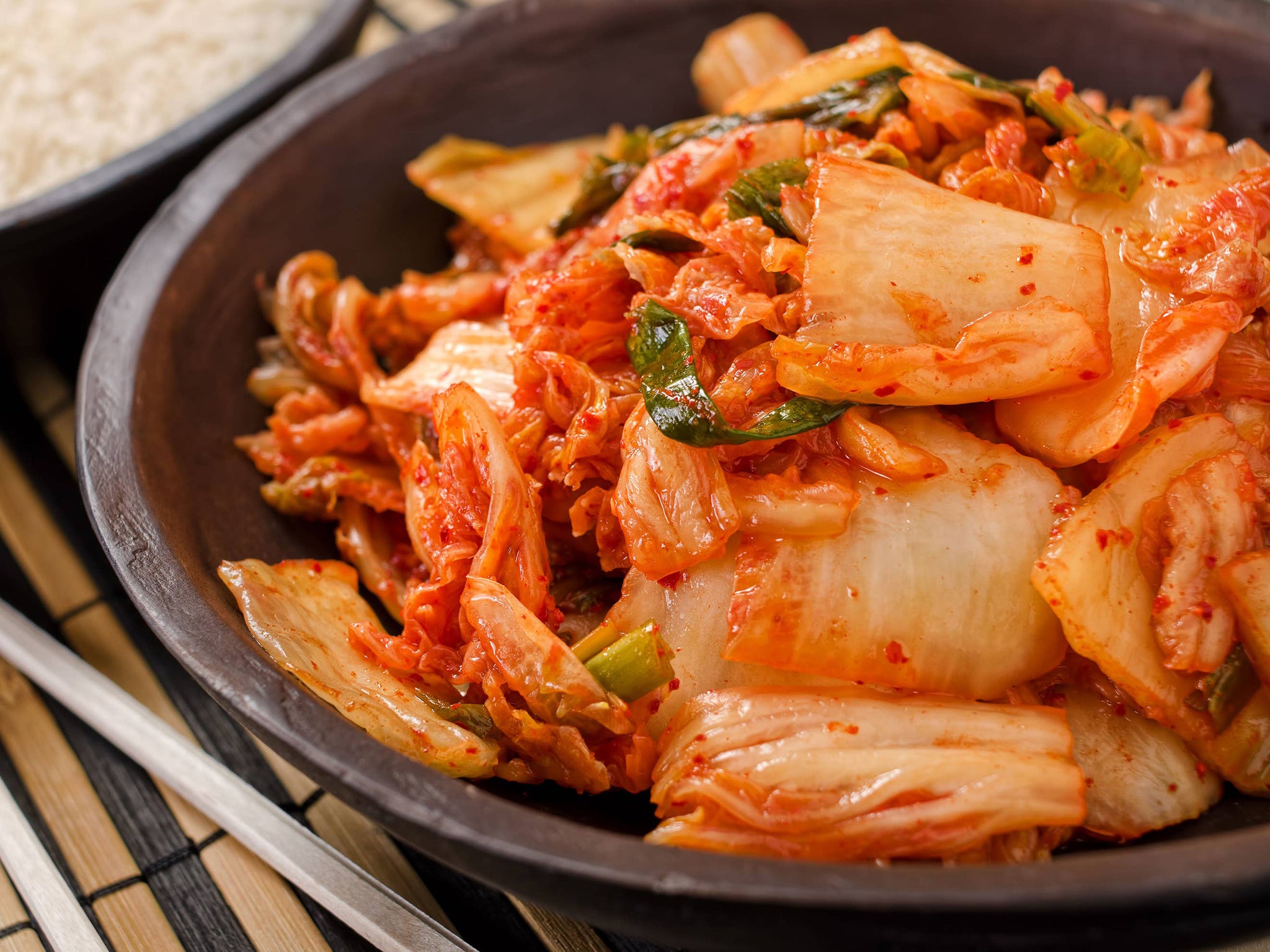How to make your own kimchi
The Korean fermented dish is delicious and offers a world of health benefits – and you could save a whole lot of money by making it yourself, says Prudence Wade

Your support helps us to tell the story
From reproductive rights to climate change to Big Tech, The Independent is on the ground when the story is developing. Whether it's investigating the financials of Elon Musk's pro-Trump PAC or producing our latest documentary, 'The A Word', which shines a light on the American women fighting for reproductive rights, we know how important it is to parse out the facts from the messaging.
At such a critical moment in US history, we need reporters on the ground. Your donation allows us to keep sending journalists to speak to both sides of the story.
The Independent is trusted by Americans across the entire political spectrum. And unlike many other quality news outlets, we choose not to lock Americans out of our reporting and analysis with paywalls. We believe quality journalism should be available to everyone, paid for by those who can afford it.
Your support makes all the difference.Eating kimchi could have some impressive health benefits, according to new research.
The fermented cabbage and vegetable dish is often linked to improving beneficial bacteria in the gut, and now a new study has found that the Korean classic may lower men’s overall risk of obesity.
The results showed that men who ate one to three servings of cabbage kimchi a day had an 10 per cent lower risk of obesity when compared to men who ate less than one serving.
The research, published in the journal BMJ Open, examined data for 115,726 people aged 40 to 69 in Korea. It also suggested that men and women who ate radish kimchi had around a 8-11 per cent reduced risk of fat around the middle and abdomen.
So kimchi could be pretty good for you – as well as being delicious – but it’s not inexpensive to buy from the shop.
If you’re keen to reap the potential benefits of this gut-friendly food (particularly if you want to eat multiple servings a day), the best way forward could be making your own at home.
Napa cabbage kimchi

According to Junghyun Park and Jungyoon Choi, authors of The Korean Cookbook, if you sit down for a typical Korean meal, almost all of the dishes incorporate some type of fermentation.
“The napa cabbage kimchi is one of the most iconic kimchis of Korea,” they say. “It is typically made in fall or winter, when the napa cabbage is most delicious.”
This is Junghyun Park and Jungyoon Choi’s recipe for napa cabbage kimchi.
Makes: 2-2.5 kg
Ingredients:
For the brined cabbage:
1 large head napa cabbage/Chinese leaf
1 cup coarse sea salt
For the rice slurry:
1 tbsp glutinous rice flour
For the kimchi seasoning:
½ cup gochugaru
6 tbsp minced garlic
1 tbsp chopped fresh ginger
2 cups Korean pear juice
1 tbsp salted shrimp
3 tbsp anchovy fish sauce
350g mu (Korean radish), cut into 4cm matchsticks
100g onion, halved and thinly sliced
50g spring onion, cut into 4cm lengths
30g minari, cut into 4cm lengths
Method:
1. Brine the cabbage: remove any damaged leaves from the cabbage. Make an incision five centimetres long at the base of the cabbage and pull the cabbage in half by tearing with your hands. With extra-large napa cabbage, cut into quarters.
2. In a bowl, stir to combine half a cup of the coarse salt with four cups of water. Taking the halved cabbage, dip it into the salt water four times, making sure each leaf is evenly coated. Repeat for all. Sprinkle the remaining half cup of salt evenly over the cabbage, focusing on the thicker parts of the leaves and including the outer layers and the base.

3. Choose an airtight glass or ceramic container large enough to fit the kimchi with a small amount of breathing room at the top (to prevent overflow while fermentation occurs). Place the salted cabbage into the container cut-side up. Pour in the brine remaining in the bowl to cover. To prevent the cabbages from floating, set a heavier object, such as a water bottle, on the cabbage to keep it submerged.
4. Let the cabbage brine at room temperature for six to seven hours. Check that the cabbage is sufficiently brined by gently bending the thickest part of the leaf; it should gently bend to the touch. Rinse the cabbage three times under cold running water, squeeze out excess water, and place the cabbage face down in a sieve to drain excess moisture. Discard the brine from the container.
5. Make the rice slurry: In a small saucepan, combine the glutinous rice flour and one cup of water, and cook over medium heat, whisking constantly so that the flour does not clump. When bubbles begin to form, cook, while stirring, for another three minutes to form a slurry. Remove from the heat and let cool completely.
6. Make the kimchi seasoning: In a large bowl, combine the gochugaru, garlic, ginger, pear juice, salted shrimp, fish sauce, and cooled rice slurry and mix until evenly combined. Add the radish, onion, spring onion, and minari and toss.
7. To assemble the kimchi, stuff each layer of the prepared cabbage with the kimchi seasoning mixture. After finishing each wedge, use the outermost leaf to enclose the cabbage and prevent the kimchi seasonings from escaping. Place the finished kimchi into the container with the cut-side facing up, pressing the cabbages down firmly so that there is no space left in the container. Pour any remaining kimchi seasoning over the pressed cabbages. Cover the surface of the kimchi with cling film to avoid contact with oxygen as much as possible and close the container. Let it ferment at room temperature for one to two days, and then move into the refrigerator for an additional 10 days.
8. The kimchi can be stored for more than one year if stored well in the refrigerator, as long as it prevented from coming into contact with oxygen as much as possible.
‘The Korean Cookbook’ by Junghyun Park and Jungyoon Choi (Phaidon Press, £39.95).
Join our commenting forum
Join thought-provoking conversations, follow other Independent readers and see their replies
Comments